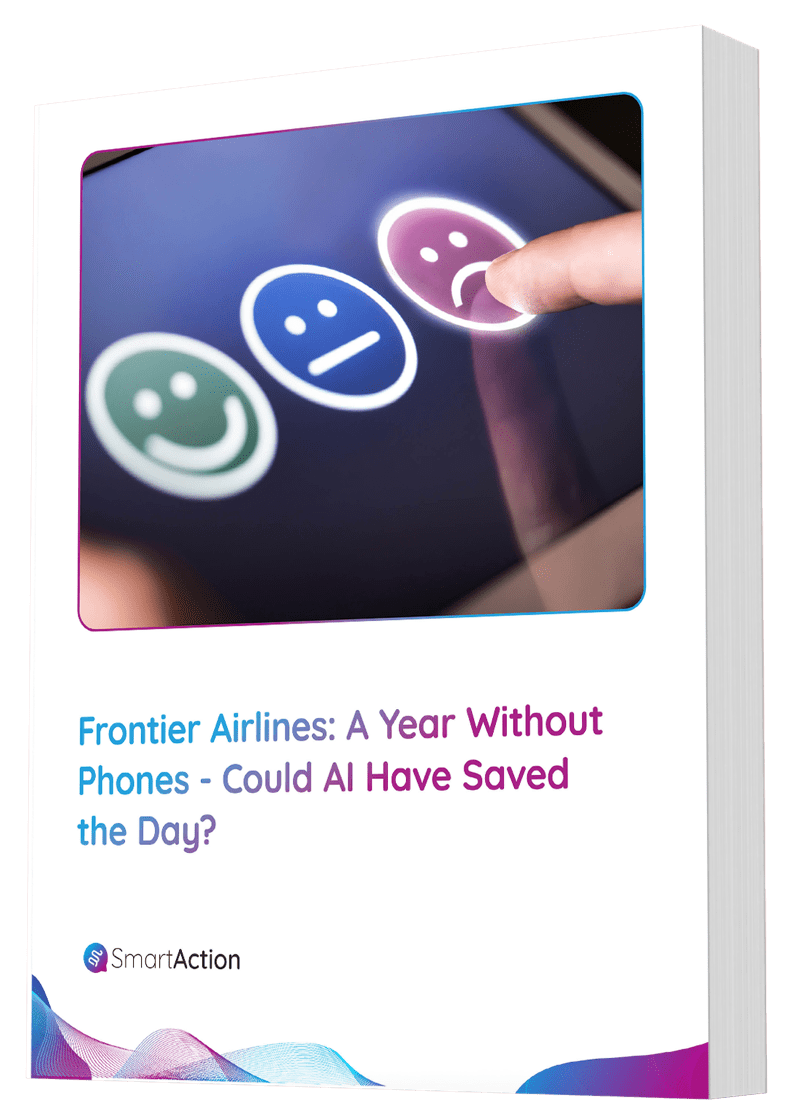Replace IVR Automation: Discover a Practical Use Case for Artificial Intelligence (AI) Automation
Artificial Intelligence: the buzzword of all buzzwords. AI has been talked about for months and years on end, with businesses finally beginning to insert it into their planning and priorities. But one of the things that we have heard a lot is that many people within these businesses do not totally understand what it means. Many more have misperceptions about its capabilities, or moreover, do not grasp what the best use cases are for AI-powered customer service in their specific business. They are looking for a low risk, high value way to ease into business-focused AI, and if you are reading this, you have come to the right place. Discover the practical use case for incorporating AI into your customer experience: Intelligent Front Door.
Move Over IVR Automation: Introducing Natural Language Intent Capture
As we all know, customers—despite all the technology around them—are still making phone calls for service and support. We also know that expectations continue to grow: 56% of customers have higher expectations than they did even a year ago. So if you are offering the same customer experience as last year, then you are already behind the 8-ball. A top friction spot that we have identified is with simple Interactive Voice Response (IVR) routing. These are the touchtone systems that force customers to make a selection using the keypad, often listing 3-5 options before allowing the customer to choose. If you hadn’t guessed, basic IVR routing is outdated. It can cause several problems, particularly around incorrect selections, waiting on hold, and multiple transfers.
These challenges can be mitigated through the use of AI, through one specific use case known as an Intelligent Front Door. It uses Artificial Intelligence, Advanced Speech Recognition (ASR), and Natural Language Understanding (NLU) to capture caller intent at the outset of every call. Essentially customers are just answering, “How can I help you today?” But instead of an agent asking the question, it is automated. This natural language IVR substitute for traditional routing provides easy, conversational communication for customers, as opposed to the limited options of touchtone (also known as DTMF). Not to mention that, when powered by AI, it is far more capable than the directed dialogue speech options of the recent past. Rather than forcing customers into one-word answers from a menu (“For Billing, say ‘Billing.’”), Intelligent Front Door offers a more open and comfortable dialogue. As you can imagine, there are a number of key benefits to engaging with customers in this way.
Offer proactive and predictive experiences
Three-fourths of US adults want companies to value their time and to understand their needs and expectations. With self-service AI automation and the right data, businesses can both recognize customers and anticipate their needs, even before they know that they have them. This proactive anticipation leads to streamlined communications and ultimately more loyal customers. For example, using Caller ID to match a caller to a recent online purchase, natural language IVR could answer an inbound call with, “Hi Jennifer, I see you recently made an online purchase. Is that what you are calling about?”
Open up a new world of self-service AI capabilities
With an Intelligent Front Door in place, you can then start to identify other processes where self-service AI also makes sense. If you already have self-service for some of those processes, you could see higher take rates; the AI automation to start the call makes it a little easier for customers to be comfortable using it for subsequent inquiries. But you can also figure out which other processes can be automated using AI in the future. Two-thirds of customers want to self-serve, so let them!
AI-Powered Front Door Benefits Agent Experience
With self-service handling intent capture and possibly other complex tasks, agents are talking to the right customers and can help to create successes within the overall customer experience. They are more focused because they do not have those repetitive tasks bogging them down and making them feel tapped out; they can hone in on important tasks and inquiries. They are also enabled with access to all customer data and call summaries so that they do not force customers to repeat information—something that 9 out of 10 customers say they hate doing.
With an Intelligent Front Door, customers have high quality, low effort experiences no matter which path they end up taking. There’s no need to dive head first into a full contact center technology replacement, or embark on a huge AI automation project. Ease into the revolution with an AI-powered Front Door.






